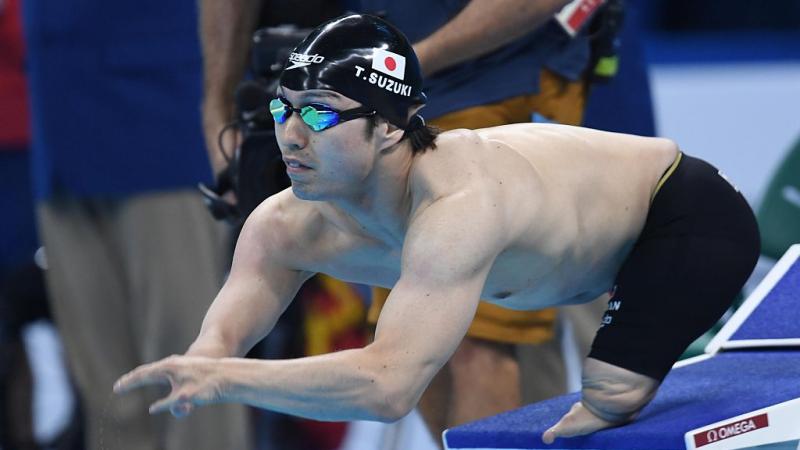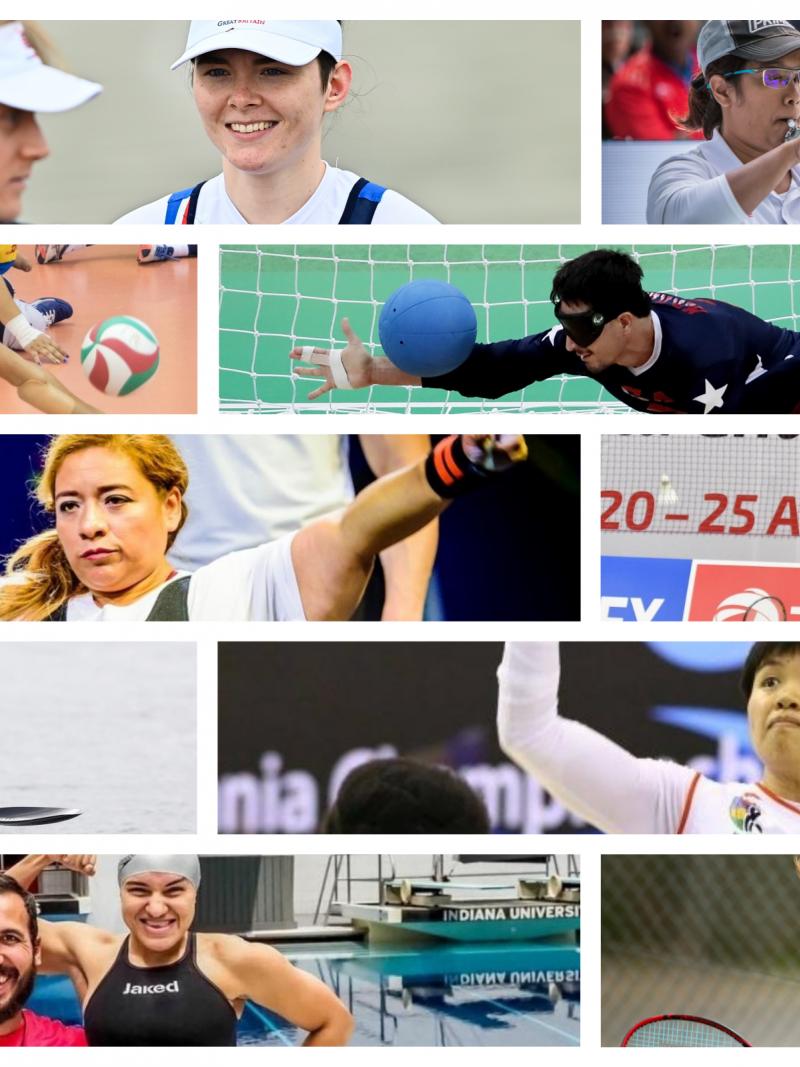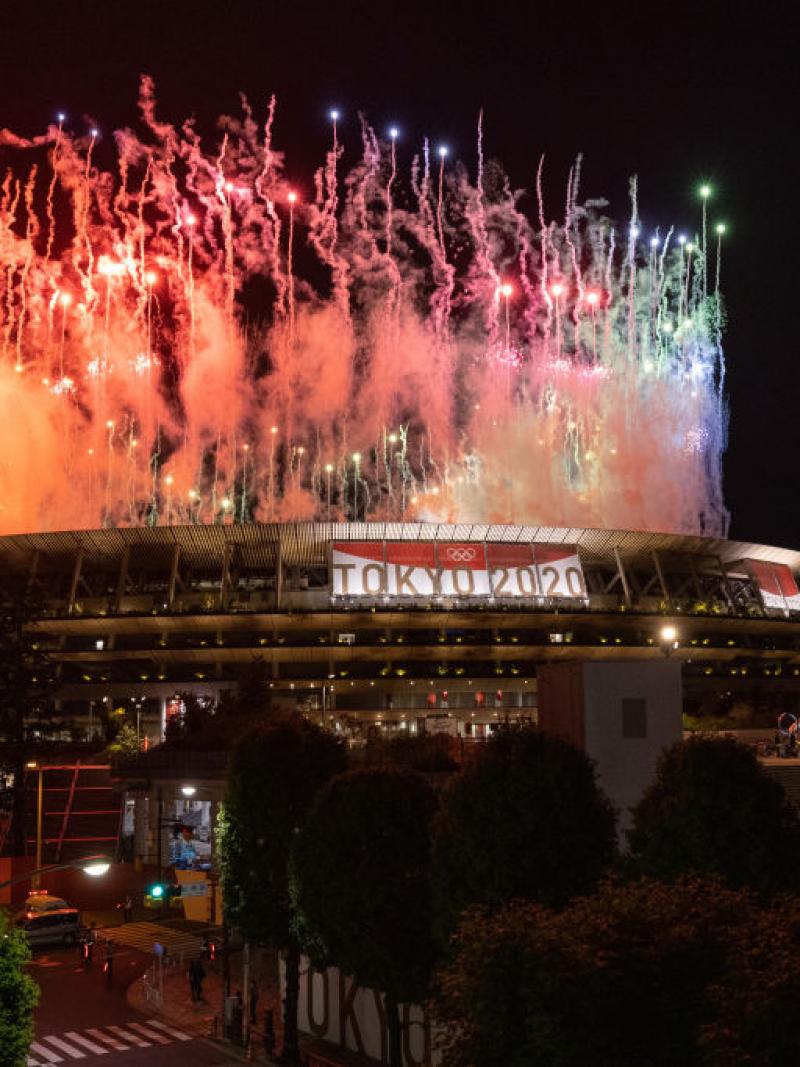All you need to know about Victory Ceremony at Tokyo 2020
As athletes dream of gold medal glory and being on top of the podium, Japan's Takayuki Suzuki has been there and knows what it feels like. And at Tokyo 2020, another 539 gold medallists will get to experience that life-changing moment, too. 10 Aug 2021Takayuki Suzuki’s most treasured sporting memory is the view from the top of the podium at the Paralympic Games.
As the national anthem played, the elite Para swimmer looked out across the arena and saw his country’s flag hoisted high above the spectators. The medal ceremony and his sense of pride after winning the 50m breaststroke SB3 final and setting a World Record at Beijing 2008 still lives with him.
“The ceremony is the most memorable moment for me. I cannot forget the view from the top of the podium,” said Suzuki to the International Paralympic Committee. “My motivation for swimming is to win at international competitions such as the Paralympic Games.”
Suzuki, who is an ambassador for Tokyo 2020, will get the chance to repeat the experience in front of his home nation at the Tokyo Aquatics Centre in Tatsumi-no-Mori Seaside Park. He beat the qualification standard for men’s 200m freestyle (S4) and 150m individual medley (SM4) at the national championships in May.
It will be the 33-year-old’s fifth Paralympics. He won a bronze medal in Beijing, silver at Athens 2004, two more bronzes at London 2012 but missed out on the podium at Rio 2016. Suzuki has collected a further five gold medals at the 2018 Asian Para Games in Jakarta and gold at the 2013 World Championships in Montreal, along with many other medals.
Elite Para athletes across 22 sports will experience what Suzuki and few people will ever experience when they receive their medals on top of the podium at the Tokyo 2020 Paralympic Games. Their sporting excellence will be acknowledged for the world to see as a medal is placed around their necks and their national anthem is played.
There will be about 4,400 athletes looking to be one of the 539 gold medallists. Each of the victory ceremonies at the Games, which starts on 24 August, will be a carefully choreographed event, to emphasise the magnitude of the moment, and its place in sporting history.
This is what athletes and viewers can expect at Tokyo 2020:
VICTORY COSTUMES AND PODIUM
The athletes will be led out by medal bearers and dignitaries. The costumes worn by the medal bearers are in the traditional Japanese colour of indigo blue, which is the 'colour for victory', used by warlords during the Sengoku period and in workers’ clothes in the Edo period. They were based on the idea of a modern ceremonial dress with kimono production techniques, which include 'kasane' (layering), 'ori' (weaving), 'mushubi' (knots), and 'so-me' (dyeing).
The costume designer, Sota Yamaguchi, also created the trays for the gold, silver and bronze medals. He chose a traditional Japanese fan motif to adorn the trays, which were produced using recycled thermoplastic polymer.
The athletes will line up behind the podium, which is also coloured indigo blue, in their respective places. The podiums were created using 24.5 tonnes of recycled household plastic waste, which was donated by people across Japan to show how sustainability in society can be achieved.
Waste material was also used to make the symbols embedded along the sides. Designer Asao Tokolo, who also created the Tokyo 2020 emblem, based it on the traditional Japanese chequered pattern, ichimatsu moyo, used aluminium recycled from temporary housing provided in the regions affected by the 2011 Great East Japan Earthquake.
THE MEDALS
Each athlete will then take their turn – starting with bronze, then silver and gold - to receive their Tokyo 2020 medal. The design of the medals is based on the idea that to achieve glory, athletes must strive for victory on a daily basis. They resemble rough stones that have been polished and shined with 'light' and 'brilliance' to symbolise the energy of the athletes and those who have supported them, as well as the warm glow of friendship.
The medals also represent diversity and show how people who compete in sports and work hard are honoured.
As the medals are presented the melody and soaring chorus of the victory ceremony music will be played. It was composed by Naoki Sato, who is one of Japan’s leading composers. He said the music was designed 'to accompany the moment when people around the world unite in praise and celebration of the athletes on the podium'.
The emotional arrangement will be followed by the gold medal winners’ national anthem, which will play as their nation's flag is hoisted for everyone to see. During this memorable moment will be the realisation, after all the hard work and sacrifice, of a dream come true.
As Suzuki said: “I cannot forget the view from the top of the podium.”
 Facebook
Facebook
 Instagram
Instagram
 Twitter
Twitter
 Youtube
Youtube




